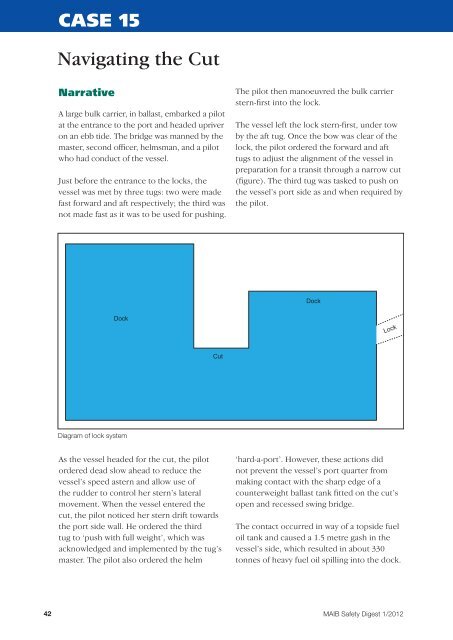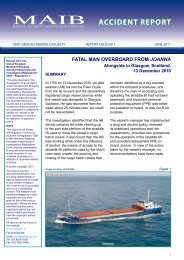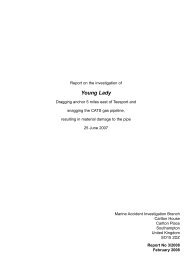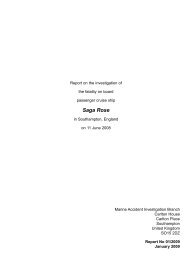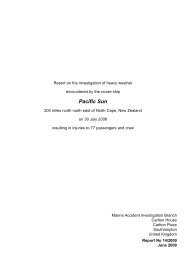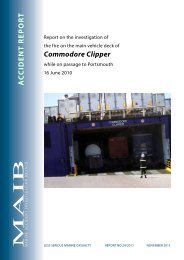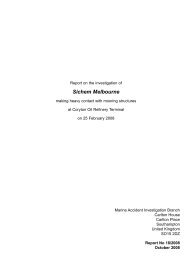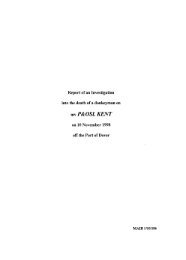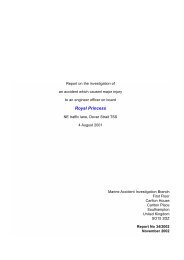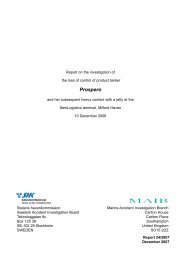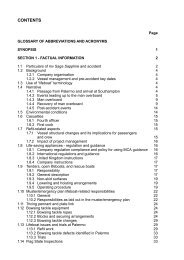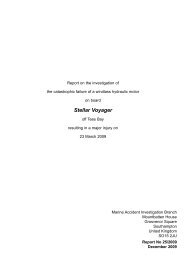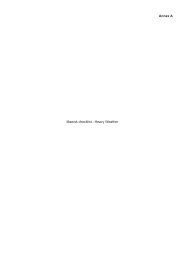Part 1 - Merchant Vessels - Marine Accident Investigation Branch
Part 1 - Merchant Vessels - Marine Accident Investigation Branch
Part 1 - Merchant Vessels - Marine Accident Investigation Branch
You also want an ePaper? Increase the reach of your titles
YUMPU automatically turns print PDFs into web optimized ePapers that Google loves.
CASE 15<br />
Navigating the Cut<br />
Narrative<br />
A large bulk carrier, in ballast, embarked a pilot<br />
at the entrance to the port and headed upriver<br />
on an ebb tide. The bridge was manned by the<br />
master, second officer, helmsman, and a pilot<br />
who had conduct of the vessel.<br />
Just before the entrance to the locks, the<br />
vessel was met by three tugs: two were made<br />
fast forward and aft respectively; the third was<br />
not made fast as it was to be used for pushing.<br />
Dock<br />
Diagram of lock system<br />
Cut<br />
As the vessel headed for the cut, the pilot<br />
ordered dead slow ahead to reduce the<br />
vessel’s speed astern and allow use of<br />
the rudder to control her stern’s lateral<br />
movement. When the vessel entered the<br />
cut, the pilot noticed her stern drift towards<br />
the port side wall. He ordered the third<br />
tug to ‘push with full weight’, which was<br />
acknowledged and implemented by the tug’s<br />
master. The pilot also ordered the helm<br />
The pilot then manoeuvred the bulk carrier<br />
stern-first into the lock.<br />
The vessel left the lock stern-first, under tow<br />
by the aft tug. Once the bow was clear of the<br />
lock, the pilot ordered the forward and aft<br />
tugs to adjust the alignment of the vessel in<br />
preparation for a transit through a narrow cut<br />
(figure). The third tug was tasked to push on<br />
the vessel’s port side as and when required by<br />
the pilot.<br />
42 MAIB Safety Digest 1/2012<br />
Dock<br />
Lock<br />
‘hard-a-port’. However, these actions did<br />
not prevent the vessel’s port quarter from<br />
making contact with the sharp edge of a<br />
counterweight ballast tank fitted on the cut’s<br />
open and recessed swing bridge.<br />
The contact occurred in way of a topside fuel<br />
oil tank and caused a 1.5 metre gash in the<br />
vessel’s side, which resulted in about 330<br />
tonnes of heavy fuel oil spilling into the dock.


